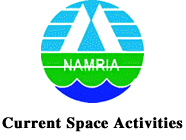Mainproject

Introduction:
Remote sensing in the country started in the mid 1970's with the use of Landsat MSS data for land use/land cover mapping, forest resource inventory, shallow reef mapping, mangrove area inventory and tracking of the direction of sediment loads from rivers. In the late 1980's an updating of forest cover map for the whole country was done using SPOT data. From then on remote sensing technology has been applied to various undertakings.
Since the establishment of the Philippines-Australia Remote Sensing Project in the country in 1991 through an Australian Assistance for International Development (AUSAid) grant, the use of the technology has been adopted by many. Through this Project, the use of remote sensing in other institutions was encouraged and strengthened in those agencies that has already started the use of the technology. A National Coordinating Committee on Remote Sensing (NCCRS) was established. It was chaired by the Executive Director of the Philippine Council for Advance Science Technology Research and Development (PCASTRD) under the Department of Science and Technology (DOST). A National Remote Sensing Center was housed under the National Mapping and Resource Information Authority (NAMRIA). Since then, remote sensing data has been continuously used both in the planning, management and in the monitoring of changes in the environment and in disaster/hazard mitigation.
The National Remote Sensing Center - NAMRIA
The Center is an integrated service unit. It provides digital image processing and related remote sensing data requirements to the offices under NAMRIA, to the Department of Environment and Natural Resources (DENR) and to other government agencies as well as the private sector. It is also tasked with the formulation and implementation of remote sensing project applications using image-processing techniques. Furthermore, the Center is to develop training programs and conduct training of other users on developed remote sensing techniques and methodologies. It serves as a coordinating body and with other relevant agencies and institutions concerned with remote sensing technology development and training.
Remote Sensing Activities at the NRSC in Support of Government Programs:
1. Updating of 1:50,000 maps
A methodology for updating topographic maps using satellite data was developed with the assistance of the Australian Land Information Group (AUSLIG)*.
2. Sustainable land management of local government units
The concept of remote sensing as a source of land cover/land use information was introduced as a part of a Swedish grant to capacitate selected local government in terms of their local planning capabilities.
3. Delineation/relocation of forest boundary lines
A banner program of the Department of Environment and Natural Resources (DENR) is the delineation/relocation of forest boundaries. Land Cover/ Land Use maps derived from remote sensing are being used as inputs to this program.
4. Mangrove inventory
In conjunction with the DENR's Coastal environment Project, NAMRIA is conducting an inventory of mangrove areas. Remote sensing is used in mapping mangrove areas with the aim of relating these data to mangrove types and structural characteristics gathered in the field.
Coastal and land cover mapping of Lingayen Gulf, Philippines Using SPOT 4 data, municipal base mapping using GIS and the feasibility study on the establishment of a ground receiving station in the country.
Remote Sensing Research and Development
1. Land Use Land Cover Change (ASEAN Regional Cooperation)
This is a regional project that aims to study the dynamics of land use change in South East Asia. It aims to understand socio-economic factors impact on land use/ land cover changes. Major activities include temporal and spatial analysis of land use/land cover change over a ten year period using remote sensing, collection and input to GIS of other thematic data such as roads, administrative boundaries, rivers etc. and inventory and collection of socio-economic data. This study aims to develop and empirical diagnostic model to better understand the dynamics of land use/land cover change.
2. Philippines NASA-AirSAR Project
(Inter-agency collaboration with support from the Department of Science and Technology)
In 1996 the Pacific Rim deployment of the NASA AirSAR/TopSAR commenced with the participation of five (5) agencies namely: NAMRIA, PHIVOLCS, BSWM, UPTCAGP, PAGASA. The studies conducted includes backscatter studies of coastal land cover/features, soil moisture, geologic mapping, volcanic studies, A second phase of the project is presently being conducted. In addition to SAR data, MASTER data will also be collected. Studies to be conducted include hyper spectral studies of bottom cover of shallow reef areas, flosistic differentiation using both SAR and MASTER data, locating oil slicks, and biomass estimation among others.
(Remarks) The Australian Land Information Group (AUSLIG)* and the Australian Geological Survey Organization (AGSO) merged to form "Geoscience Australia", please note.